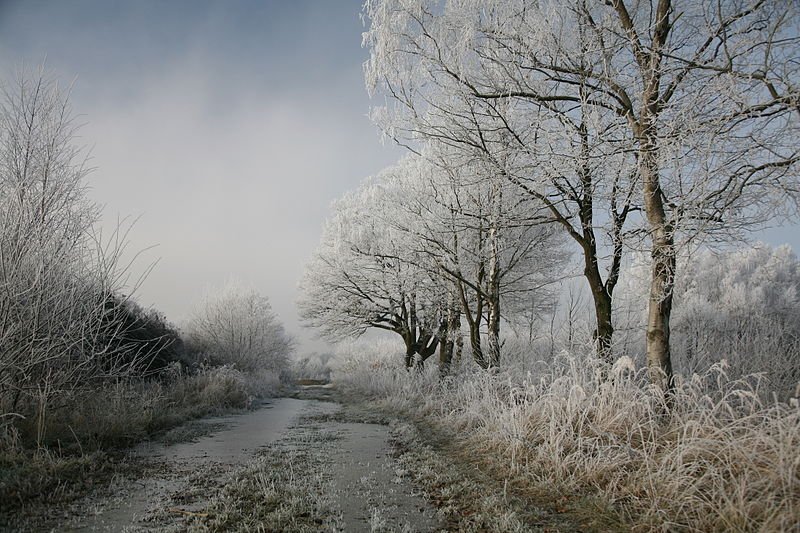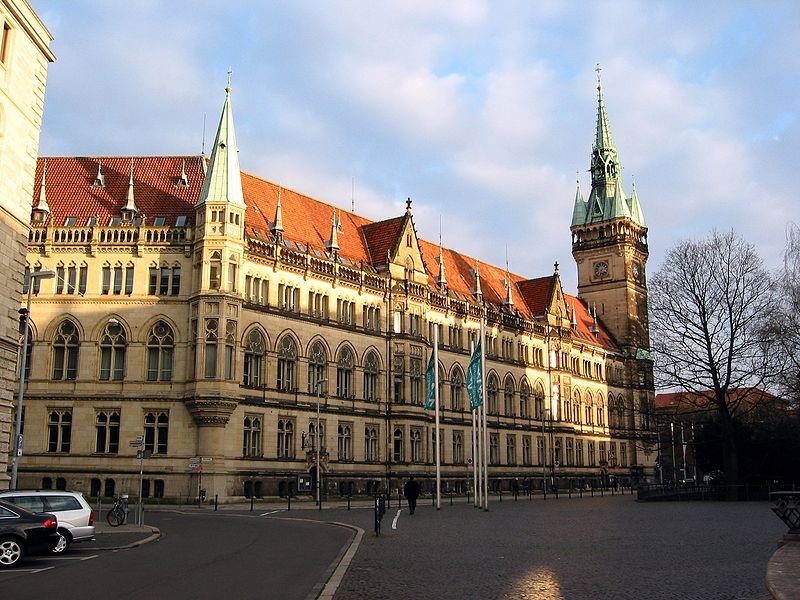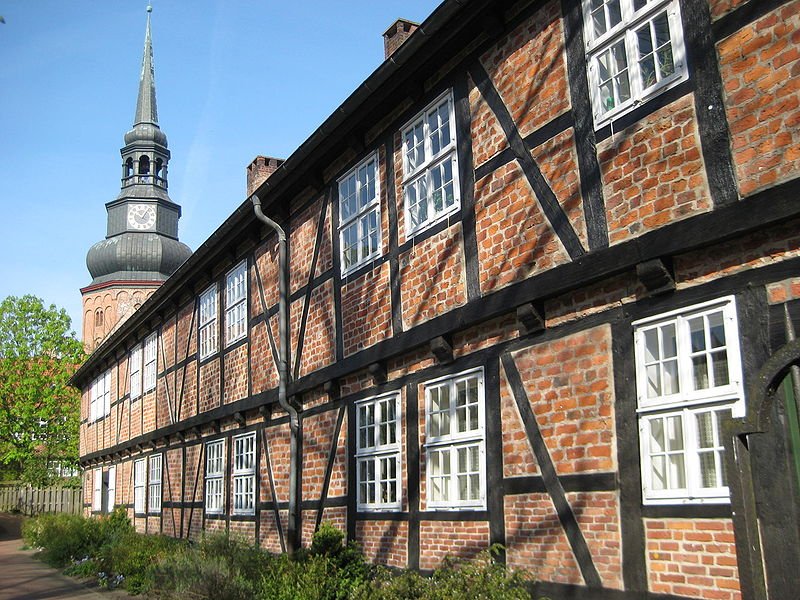 Cold winter day in Lower Saxony
Cold winter day in Lower SaxonySource: https://commons.wikimedia.org/wiki/File:D_Hoarfrost1.jpg
Author: Daniel Schwen

Lower Saxony is a state on the northern part of the Federal Republic of Germany. The state covers an area of 47,624 sq km (18,388 sq mi) and has a population of 7.9 million people. The name of Lower Saxony in German is Niedersachsen.
The capital of Lower Saxony is Hanover. The state is bordered by Schleswig Holstein to the north, Mecklenburg-Vorpommern to the northeast, a small section of Brandenburg to the east, Saxony-Anhalt to the southeast, Thuringia, Hesse and North Rhine-Westphalia to the south, and the Netherlands to the west. It also faces the North Sea to the northwest. It also surrounds the city states of Bremen and Hamburg. Indeed, Lower Saxony borders more neighboring states than any other state of Germany.
The northwestern part of Lower Saxony is called Ostfriesland (East Frisia). It is along the coast of the North Sea and includes seven off-shore islands called the East Frisian Islands. To the extreme west is the sparsely populated area called Emsland.
 Brunswick town hall (Braunschweiger Rathaus)
Brunswick town hall (Braunschweiger Rathaus)Source: https://commons.wikimedia.org/wiki/File:Braunschweig,_Rathaus_%284%29.jpg
Author: Magnus Manske

Most of the population of Lower Saxony is concentrated in the cities in the central and southern part of the state. To the northeast of Lower Saxony is the Lüneberg Heath, the largest heathland in Germany, and was once a major salt producing area during medieval times.
The Elbe River forms a natural boundary separating Lower Saxony from Hamburg, Schleswig-Holstein, Mecklenburg-Western Pomerania and Brandenburg. The area south of the Elbe is called Altes Land, or Old Country, and is famous for being the biggest apple-producing region in Germany.
The name Lower Saxony pointed to areas where the Saxon tribe once lived. The present-day boundaries of Lower Saxony exactly distinguish areas inhabited by the Saxons, as it also includes areas that are inhabited by the Frisians. It does however indicate territories once ruled by the dukes of Saxon.
 Hinter der Kichte, a timber-frame house in Brunswick
Hinter der Kichte, a timber-frame house in BrunswickSource: https://commons.wikimedia.org/wiki/File:Braunschweig_fachwerk_02.jpg
Author: Ra Boe

Lower Saxony, or Niedersachsen, has been in use since 1300. At the turn of the 20th century, there were two major principalities in the area, namely the Kingdom of Hanover and the Duchy of Brunswick. The present state was founded after the Second World War, in 1946, through the merger of former states.
Visiting Lower Saxony
The airports in Hanover, Hamburg, Bremen and Münster/Osnabrück act as gateway to Lower Saxony. It is easy to catch a train from Frankfurt to major cities in Lower Saxony. The main expressway serving the state is the Autobahn A2, with some areas also served by the A1 and A7. Johanniskloster in Stade, Lower Saxony
Johanniskloster in Stade, Lower SaxonySource: https://commons.wikimedia.org/wiki/File:StadeJohanniskloster.JPG
Author: MrsMyers

Cities of Lower Saxony
World Heritage Sites in Lower Saxony
Spa Towns in Lower Saxony
Travel Destinations in Lower Saxony
- Dümmer Nature Park
- Elbufer-Drawehn Nature Park
- Harz National Park
- Lower Saxony Wadden Sea National Park
- Lüneburg Heath Nature Park
- Münden Nature Park
- North Sea
- Solling Vogler Nature Park
- Steinhuder Meer Nature Park
 Latest updates on Penang Travel Tips
Latest updates on Penang Travel Tips

Copyright © 2003-2025 Timothy Tye. All Rights Reserved.

 Go Back
Go Back